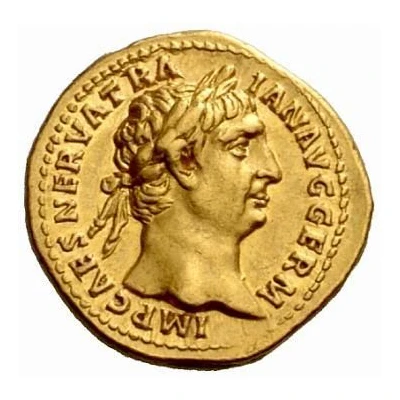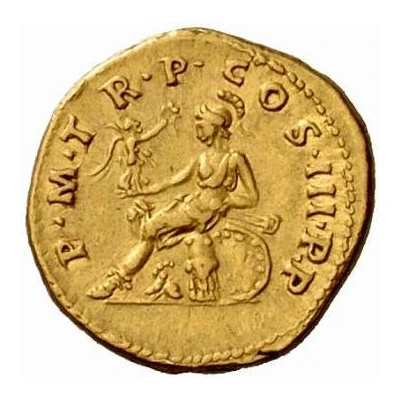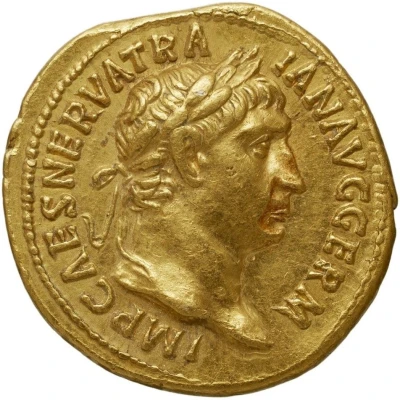Aureus - Trajan DACICVS COS IIII P P
| Gold | - | - |
| Issuer | Rome › Roman Empire (27 BC - 395 AD) |
|---|---|
| Emperor | Trajan (Marcus Ulpius Traianus) (98-117) |
| Type | Standard circulation coin |
| Years | 101-102 |
| Value | 1 Aureus = 25 Denarii |
| Currency | Denarius, Reform of Augustus (27 BC – AD 215) |
| Composition | Gold |
| Shape | Round (irregular) |
| Technique | Hammered |
| Demonetized | Yes |
| Updated | 2024-10-05 |
| Numista | N#252926 |
|---|---|
| Rarity index | 100% |
Reverse
Trajan standing in quadriga left, holding branch and sceptre.
Script: Latin
Lettering: DACICVS COS IIII P P
Translation:
Dacicus, Consul Quartum, Pater Patriae.
Conqueror of the Dacians, consul for the fourth time, father of the nation.
Comment
Source: Online Coins of the Roman Empire (OCRE)Interesting fact
The Aureus was a gold coin used in ancient Rome, and it was considered the standard unit of currency for the Roman Empire. The Aureus coin was first introduced during the reign of Emperor Augustus (27 BC - 14 AD) and was used until the fall of the Roman Empire in 395 AD. The Aureus was made of gold and had a standard weight of 1/40 of a Roman pound, which is equivalent to 8.18 grams. The coin was used for large transactions and was considered a symbol of wealth and power. The Aureus - Trajan (DACICVS COS IIII P P) (101-102) coin that is particularly interesting because it was issued during the reign of Emperor Trajan (98-117 AD), who was known for his military conquests and extensive public building programs. The coin features an image of Trajan on one side and the Roman goddess Victory on the other side. The coin's inscription, "DACICVS COS IIII P P," stands for "Dacicus, Consul for the fourth time, Father of the Fatherland." This inscription indicates that Trajan was a powerful and influential leader in ancient Rome. Overall, the Aureus - Trajan (DACICVS COS IIII P P) (101-102) coin is a valuable piece of history that provides insight into the economic and political systems of ancient Rome.



